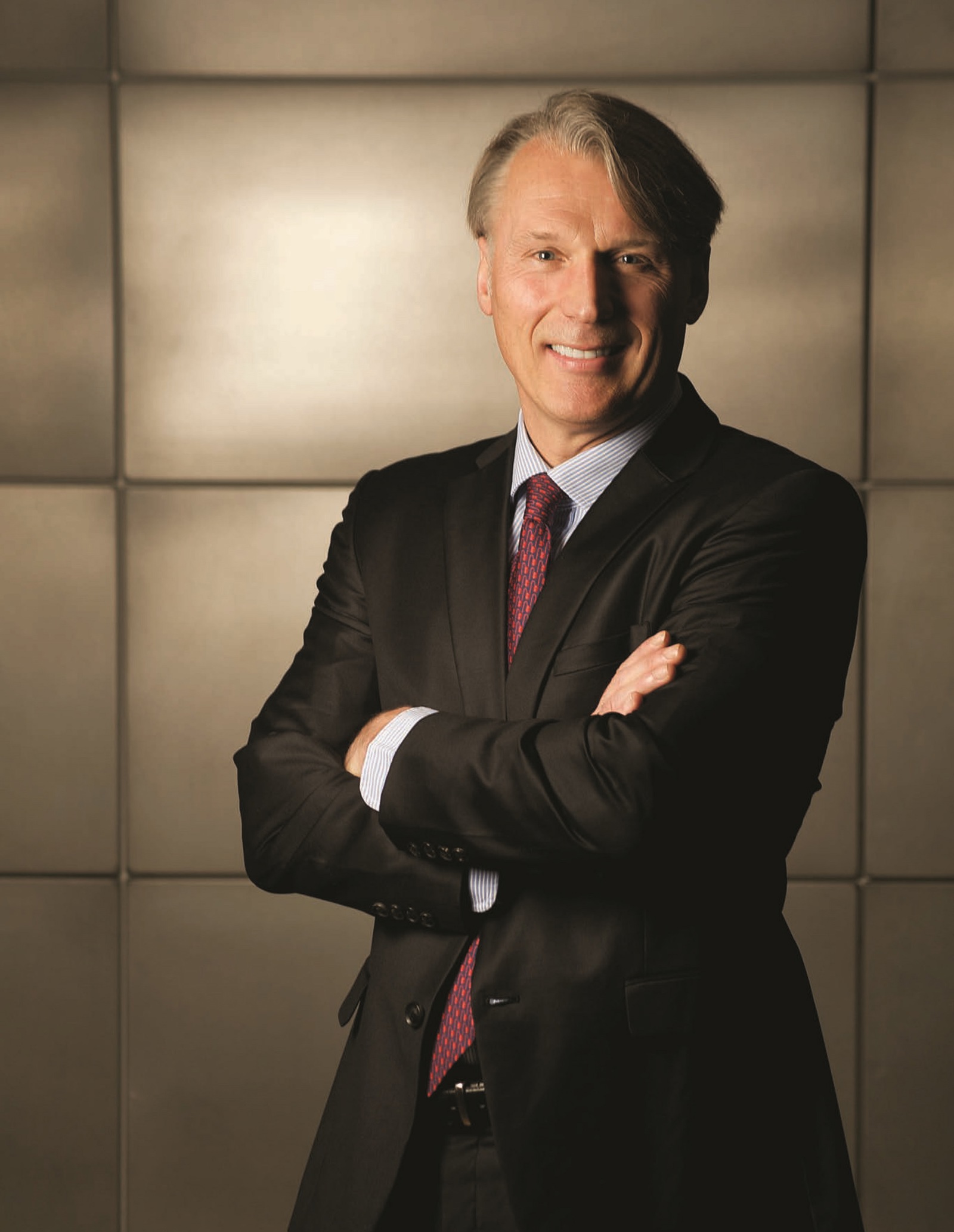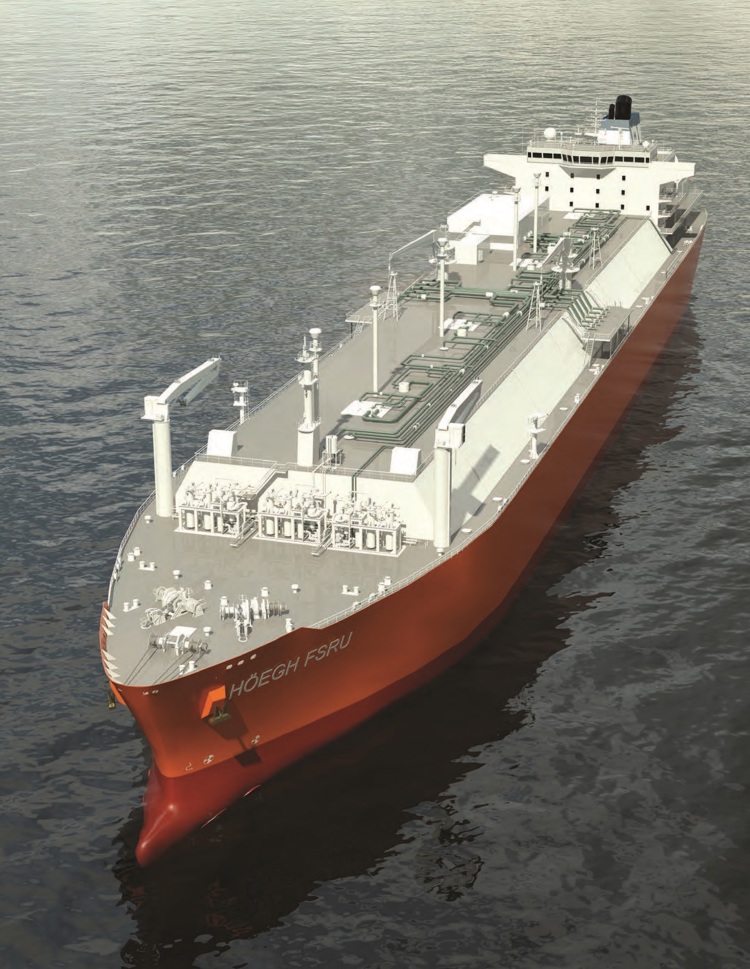
Pioneers in floating regas
"When we find suppliers who share our vision and focus on delivering on expectations, like Kongsberg Maritime, we tend to use them again and again. Trust is a key part of building long-term relationships," Sveinung J. S. Støhle, Höegh LNG's President and CEO.
-
Text:Kongsberg Maritime Communication
-
Gunvor Hatling MidtbøVice President, Communications
On 23 January, Höegh LNG was selected preferred bidder for a 10-year contract from majority state-owned energy company, Klaipedos Nafta for an FSRU project near Vilnius, Lithuania. Two days later, the company finalised an agreement with PT Perusahaan Gas Negara (PGN) to provide an FSRU and mooring system offshore Belawan, near the city of Medan in Indonesia. The 20-year charter includes two five-year options, which could extend the charter for a total period of 30 years – the longest contract yet awarded in the FSRU market.
Securing two long-term contracts in one week is a remarkable achievement, but according to Sveinung J. S. Støhle, Höegh LNG’s President and CEO, the company’s success hasn’t happened overnight. “These contracts represent years of hard work, patience and collaboration with a broad network of suppliers and in particular builds on our success from constructing the two Neptune regas vessels on long-term charter to GDFSuez,” he says. “From a financial perspective, the contract value is significant, but this achievement by HLNG sends a strong message to the market that we are a serious and viable player in the floating LNG solutions segment, and that we can deliver on our stated objectives.”
“While we have very strong in-house technical competence, Höegh LNG has a tradition of working with leading suppliers to develop new concepts” .
A HISTORY OF INNOVATION
Established in 1973, Höegh LNG has long been recognised as a pioneer in the transportation of LNG. Indeed, the company’s first vessel, Norman Lady, was the prototype for the Moss spherical cargo containment system (the vessel is still in operation today). At the time, Höegh LNG’s parent company, Leif Höegh & Co was active in a number of different segments and so while the company successfully operated a modest fleet of LNG carriers for more than a quarter century, Höegh LNG was considered a niche player.
That all changed in the early 2000’s, when Leif Höegh & Co began selling interests in other segments to focus exclusively on LNG and Ro/Ro. At the time, the LNG industry was in a period of rapid change. Rising demand for gas, particularly in the Atlantic basin, had led to investment by big players in new and larger membrane type LNG carriers, which increased competition and lowered freight rates. Rather than join the newbuilding bandwagon, Höegh LNG decided to take a new strategic direction. In 2006, HLNG Ltd. was spun off from Leif Höegh & Co as a separate and independent LNG company, under new top management and with a clear strategy to not only offer maritime transportation services, but also develop the systems and vessels to offer long-term floating production, regasification and terminal solutions.
UNDERSTANDING THE ENERGY INDUSTRY
Støhle was recruited from the energy industry to execute the new business strategy. “When I joined the company, we had two aging vessels and a small staff,” he says. “But we also had owners who were wholly committed to the new vision for the company and strong in-house LNG expertise.”
While still committed to LNG transportation (in 2006, the company added two new carriers to its fleet, which are on long-term charter to Statoil and Total), Støhle brought in personnel with experience in the energy industry to develop other aspects of the business. “Part of our challenge in the beginning was that we were perceived as a shipping company,” he says. “Our experience with LNG and operations at sea remains critical to our business, but to expand into the LNG value chain, we also needed to bring people into the organisation who really understood the energy industry.”
THE CORE OF THE BUSINESS
Støhle explains that Höegh LNG’s business model is structured around meeting the evolving needs of energy producers and energy providers. “Put simply, by offering LNG infrastructure offshore, our customers can gain faster access to growing markets and avoid many of the costs and permitting challenges associated with the construction of land-based facilities,” he says. “By providing safe, reliable and proven floating LNG solutions, we allow energy companies to focus on their core business: trading gas and producing electricity from gas.”
To offer these services, the company had to work closely with a network of suppliers to develop new, specialised types of tonnage. For example, working in partnership with GDF Suez, Höegh LNG developed a Shuttle and Regas Vessel (SRV) – a hybrid solution that can both transport and regasify LNG at a deepwater port off the coast of Massachusetts.
The SRVs were designed and constructed by Samsung Heavy Industries, but Höegh LNG also worked closely with Hamworthy, which supplied the topside regas system, Advanced Production and Loading (APL) which provided the submerged turret loading (STL) and associated mooring systems, and Kongsberg Maritime, which provided a broad range of custombuilt electrical, automation, dynamic positioning and control systems. The result was two unique vessels, the Suez Neptune and Suez Cape Ann (delivered in 2009 and 2010 respectively). Both SRVs are on long-term charter to GDF Suez.
PURPOSE BUILT FSRU
At the same time, Höegh LNG continued its design work to develop the industry’s first purpose built FSRU, based to a large extent on previous experience. While there are other floating LNG providers, who market FSRUs, their units are either converted LNG carriers or newbuilt SRV/FSRU – in other words hybrids. “The capacity of converted LNG carriers averages about 126,000 cubic meters of gas,” he says. “Some of the newbuilt SRV’s are 150,000 cubic meters, our purpose built FSRUs have a capacity of 170,000 cubic meters, which can make all the difference in some markets.”

Støhle notes that for some projects, the conversion model is appropriate – in fact, the company recently purchased the 126,400 cubic meter capacity LNG carrier, LNG Libra that is ideal for conversion. But for companies seeking high capacity and technology, the purpose built FSRUs are the better solution. Once satisfied with the FSRU design, Höegh LNG sought equity financing on the Oslo Stock Exchange, raising about USD 132 million to construct two firm FSRUs, with 1+1+2 optional FSRU’s at Hyundai Heavy Industries.
It should be noted that while market conditions supported the decision at the time, the company did not have a charter agreement. And with a delivered cost of about USD 320 million per unit, the company was taking a calculated risk. But according to Støhle, the company was confident that the FSRUs would secure a contract before the first unit was scheduled for delivery, by the end of 2013.
“If anything, we were surprised by how quickly we were able to secure charters for both FSRUs,” he says. “But when you consider that there are more than 30 floating regas projects now in various phases of development, and that for the moment only three companies, including Höegh LNG, have the ability to deliver, we never doubted the viability of the business plan. In fact, we have recently exercised an option for a third unit and will consider building more, if market conditions continue to be positive.”
THE ART OF COLLABORATION
Støhle says that the company’s ability to collaborate with technical suppliers have been a critical factor in achieving its ambitions. “While we have very strong in-house technical competence, Höegh LNG has a tradition of working with leading suppliers to develop new designs. And when we find suppliers, like Kongsberg Maritime, who share our vision and focus on delivering on expectations, we tend to use them again and again. Trust is a key part of building long-term relationships.”
This collaboration model has been scaled up in the development of Höegh LNG’s state-owned project, an LNG FPSO, developed in cooperation with DSME E&R and Papua New Guinea’s majority state owned energy company, Petromin. So far, Höegh LNG has invested more than 300,000 engineering man-hours in the concept, producing over 1500 datasheets and a detailed FEED that has won Approval in Principle from Det Norske Veritas. Höegh LNG is working with a number of suppliers, including KBR (FPSO engineering) the Woodgroup PSN (operations and maintenance), and partners to negotiate contracts with local gas suppliers.
“Floating LNG solutions represents the industry’s fastest, most cost effective path for energy providers to gain market access and import LNG”.
ON THE FOREFRONT OF TECHNOLOGY
“The technical and commercial complexity of the FPSO project requires that we partner with other organisations and collaborate with known suppliers to get the job done,” he says. “While there are other LNG FPSO projects now in development, we are on the forefront of this technology and are confident we have a viable solution.”
Looking ahead, Höegh LNG sees tremendous growth potential in the LNG segment. “While there has been a shift in demand from the Atlantic basin to the Pacific, LNG is becoming a preferred energy supply in many markets,” says Støhle. “And right now, the greatest bottleneck is inadequate infrastructure. Floating LNG solu-tions represents the industry’s fastest, most cost effective path for energy providers to gain industry access and import LNG, and as a pioneer in this segment, we feel we are in a good position to support the industry’s growth.”